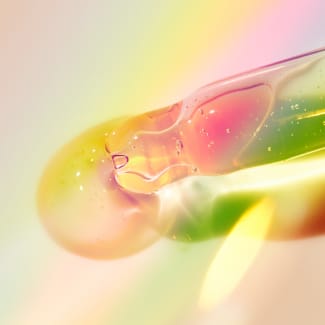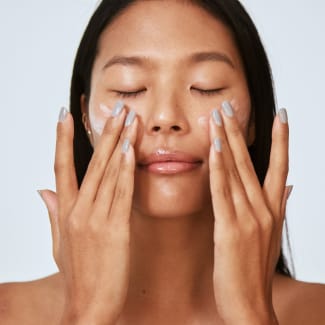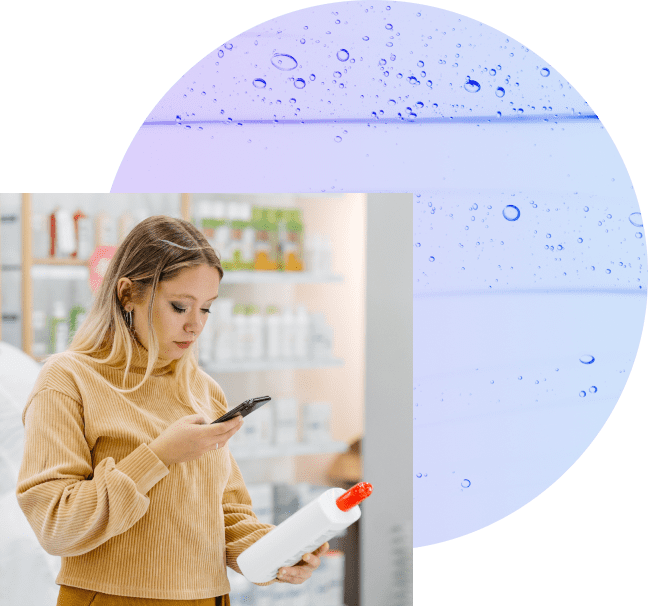Data: Fair
Avobenzone
- Products with this ingredient are allowed for use in EWG VERIFIED but must meet use restrictions and warnings based on EWG review of company data.
- This ingredient's score is higher if used in products that may not meet industry safety guidelines or U.S. and international government requirements and may have contamination concerns from toxic impurities. The score will be lower if used in products that do meet these safety guidelines and requirements and EWG’s contamination restrictions.
Other Concerns
Enhanced skin absorption, Use restrictions (moderate), Endocrine disruption (low), Irritation (skin, eyes, or lungs) (low), and Contamination concerns (high)SYNONYMS
Restricted
Restricted: EWG VERIFIED products cannot contain this ingredient without adequate substantiation
Sunlight causes this unstable ingredient to break down into unknown chemicals, especially in the presence of another active, Octinoxate. Primarily a UVA-absorbing agent.
Common concerns
See how this product scores for common concerns.
-
LOWCancer
-
LOWAllergies & Immunotoxicity
-
LOWDevelopmental and Reproductive Toxicity
-
MODERATEUse Restrictions
Ingredient concerns
- CONCERNS
- DATA SOURCES
Products with this Ingredient


| fragrance for women | 583 products |
| fragrance for men | 234 products |
| body spray | 153 products |
| conditioner | 32 products |
| oil controller | 2 products |
| hair styling aid | 18 products |
| mask | 4 products |
| moisturizer | 35 products |
| lip gloss | 31 products |
| shampoo | 43 products |
| body oil | 22 products |
| around-eye cream | 3 products |
| blush | 24 products |
| facial powder | 3 products |
| polish remover | 1 products |
| hair treatment/serum | 55 products |
| hair spray | 15 products |
| facial moisturizer/treatment | 41 products |
| lip balm | 26 products |
| recreational sunscreen | 549 products |
| after shave | 8 products |
| lipstick | 16 products |
| bronzer/highlighter | 15 products |
| styling gel/lotion | 4 products |
| body wash/cleanser | 62 products |
| daily use with SPF | 322 products |
| lip balm with SPF | 88 products |
| tanning oil | 13 products |
| baby sunscreen | 48 products |
| foundation | 57 products |
| makeup primer | 12 products |
| glitter | 1 products |
| liquid hand soap | 13 products |
| bar soap | 3 products |
| anti-aging | 6 products |
| bath oil/salts/soak | 1 products |
| toners/astringents | 2 products |
| lip liner | 9 products |
| setting powder/spray | 6 products |
| BB cream | 4 products |
| hand sanitizer | 5 products |
| facial cleanser | 14 products |
| serums & essences | 9 products |
| body firming lotion | 11 products |
| damaged skin treatment | 2 products |
| styling mousse/foam | 1 products |
| eye shadow | 13 products |
| sunless tanning | 18 products |
| Facial Sun Care | 24 products |
| detangler | 4 products |
| after sun product | 1 products |
| hand cream | 3 products |
| eye liner | 5 products |
| exfoliant/scrub | 6 products |
| Other Hair Care Preparations | 1 products |
| shaving cream | 2 products |
| Preshave Preparations | 1 products |
Contamination concerns


Allergies/immunotoxicity


| CONCERN | REFERENCE |
|---|---|
| Associated with immunotoxicity or allergies | Multiple chemical sensitivities, including iatrogenic allergic contact dermatitis, in a patient with chronic actinic dermatitis: implications for management(1996-09-01) |
| immune or allergies - weight of evidence unknown/unassessed | Relevance of UV filter/sunscreen product photostability to human safety(2014-01-01) |
Cancer


| CONCERN | REFERENCE |
|---|---|
| One or more in vitro tests on mammalian cells show positive mutation results | Nitroxide radicals protect DNA from damage when illuminated in vitro in the presence of dibenzoylmethane and a common sunscreen ingredient(1999-04-01) |
Decreased skin absorption


| CONCERN | REFERENCE |
|---|---|
| Limited potential to absorb into the skin. | Sunscreen penetration of human skin and related keratinocyte toxicity after topical application(2005-07-01) |
Enhanced skin absorption


| CONCERN | REFERENCE |
|---|---|
| Absorbs into the skin | Sunscreen penetration of human skin and related keratinocyte toxicity after topical application(2005-07-01) |
| Absorbs into the skin | Transdermal penetration of UV filters(2008-01-01) |
| Absorbs into the skin | Effect of Sunscreen Application on Plasma Concentration of Sunscreen Active Ingredients: A Randomized Clinical Trial(2020-01-01) |
Endocrine disruption


| CONCERN | REFERENCE |
|---|---|
| One or more studies show weak endocrine disruption | Endocrine Activity of AVB, 2MR, BHA, and Their Mixtures(2017-03-01) |
Organ system toxicity (non-reproductive)


| CONCERN | REFERENCE |
|---|---|
| Classified as not expected to be potentially toxic or harmful | Environment Canada |
Persistence and bioaccumulation


| CONCERN | REFERENCE |
|---|---|
| Not suspected to be bioaccumulative | Environment Canada |
Ecotoxicology


| CONCERN | REFERENCE |
|---|---|
| Not suspected to be an environmental toxin | Environment Canada |
| Limited evidence of environmental toxicity | European Chemicals Agency (ECHA) |
Use restrictions


| CONCERN | REFERENCE |
|---|---|
| Restricted in cosmetics (recommendations or requirements) - use, concentration, or manufacturing restrictions - Japan - restricted for use in cosmetics (concentration limit) | Japan Ministry of Health |
Irritation (skin, eyes, or lungs)


| CONCERN | REFERENCE |
|---|---|
| Limited evidence of skin irritation | Peer Reviewed Literature |
| Limited evidence of eye irritation | Peer Reviewed Literature |
- Multiple chemical sensitivities, including iatrogenic allergic contact dermatitis, in a patient with chronic actinic dermatitis: implications for management(1996-09-01)
- Relevance of UV filter/sunscreen product photostability to human safety(2014-01-01)
- Nitroxide radicals protect DNA from damage when illuminated in vitro in the presence of dibenzoylmethane and a common sunscreen ingredient(1999-04-01)
- Sunscreen penetration of human skin and related keratinocyte toxicity after topical application(2005-07-01)
- Transdermal penetration of UV filters(2008-01-01)
- Effect of Sunscreen Application on Plasma Concentration of Sunscreen Active Ingredients: A Randomized Clinical Trial(2020-01-01)
- Endocrine Activity of AVB, 2MR, BHA, and Their Mixtures(2017-03-01)
- Environment Canada
- European Chemicals Agency (ECHA)
- Japan Ministry of Health
- Peer Reviewed Literature
Understanding scores
Cosmetics and personal care products are not required to be tested for safety before being allowed on the market. The Skin Deep® scoring system was designed to help the public understand whether a product is safe to use or whether it contains ingredients of concern.
Every product and ingredient in Skin Deep gets a two-part score – one for hazard and one for data availability. The safest products score well by both measures, with a low hazard rating and a fair or better data availability rating.
HOW WE DETERMINE SCORES
Hazard score
The Skin Deep ingredient hazard score, from 1 to 10, reflects known and suspected hazards linked to the ingredients. The EWG Verified® mark means a product meets EWG’s strictest criteria for transparency and health.
Data availability
The Skin Deep data availability rating reflects the number of scientific studies about the product or ingredient in the published scientific literature.











